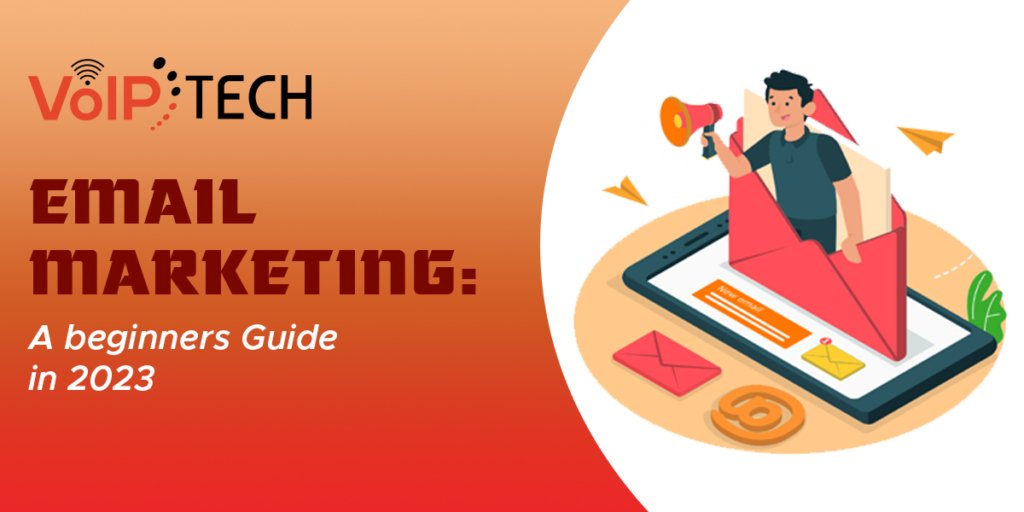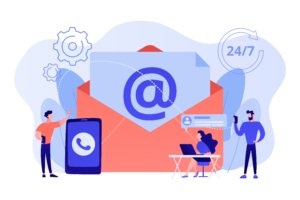In current years email is the most secure and trustworthy platform for customers to connect with their desired brands. So attractive email marketing campaigns are a must for an emerging brand. But creating appealing email marketing campaigns on a strict deadline can be a challenging task for a beginner. It is because it demands a careful mix of smart strategies and perfect execution. But finding that perfect match isn’t a guessing game. You must do a lot of effort and follow proven methods to put your best email forward.
These days for better communication, learning to build effective email marketing campaigns is crucial. When you grasp the process and workflow by heart, each of your future emails becomes more professional.
Here is the beginner’s guide to creating attractive email marketing campaigns in 2023.
A Complete Guide For Email Marketing Campaigns
1. Find your why and set a goal
First, decide what you aim to achieve with each email campaign.
Do you want your emails to generate more sales or increase engagement?
After you find these answers, set up small goals either on a monthly or quarterly basis.
For example, your goals or milestones can include :
- ncrease conversion rates by tracking who joins up for your product or service through your email marketing campaign.
- For each campaign that includes effective features, do a fresh A/B test.
- Whatever your objective is, make it SMART, achievable, and realistic.
2. Go For An Eyecatching Template
Let’s move to the next stage in developing a successful email marketing strategy. In the second step, you have to decide which template you are going to use for your emails.
You have two options,
- To use pre-customized templates or
- Design a new template from scratch
We suggest you choose ready-made templates. You get hundreds of templates which saves a lot of time for you. But if you have any specific mail for a special occasion, you can design a customized template.
- And don’t worry—your email templates don’t have to be elaborate or fancy. The more complex the designs, the more likely your receivers will be puzzled.
3. Align your email with the proper format Email header and footer: The header and footer are locations where you can promote your brand and offer your receiver a seamless experience.
The header can be as simple as your logo, while the footer can include connections to your brand’s social platforms, your company’s physical location, and an unsubscribe option.
Whitespace: Whitespace is the portion of your email that has no information or images—simply it’s white! Email designs can easily become overloaded with too many components. Therefore it is important that your email templates include some whitespace to make your email less crowded. It enables your receivers to focus more on the content of your emails.
4. Make It Simple To Read
Email authoring demands an investment of time, energy, and attention. Consider handling each email copy component separately to make the whole effort appear less burdensome. Before a receiver reads your email, the following content must appear:
Stop using “no-reply”
Email without a brand name results in a generic and unattractive experience that will most likely prevent your receivers from opening. Try using your brand name to make it clear who is sending you emails. You can also check out some different “sociable forms” for more engagements.
The subject line is the first point of contact you have with your receiver, so pay close attention to it! In fact, 87% of US recipients tell that email subject lines have a strong or moderate effect on their choice to accept or ignore a message. The best subject lines tell your recipients what to anticipate from your email.
You can use a limited word count to summarise your content and make it more attractive and easy to read.
- Try to pick one item to highlight—and remember that shorter is typically better.
5. Select The Perfect Tone
Since each customer is unique, you must select the tone that works best for your customers. For example, a scientific email newsletter requires more technical and complex language. Whereas an e-commerce business can go for more fun and informal language. The more you create and test what text and tone work best with your audience, the more at ease you will be with this stage.
Concentrate on the reader’s advantage. Before you press the send button, consider what’s in it for your visitors and why this email is worth their time. Send an email that delivers a relevant offer or emphasizes a product or service that solves a problem for your consumers. So they’ll take interest in your email.
6. Follow The Regulations
Even if you create attractive and interesting email messages, some recipients may no longer want to receive them. Don’t take it personally—subscribers come and go all the time! The CAN-SPAM Act of 2003 mandates emails marketers to give a clear option for subscribers to opt out of email marketing efforts. Failure to adhere can have serious consequences for your deliverability and sender reputation; fortunately, including a clear “Click here to unsubscribe” link at the bottom of every marketing email you send will assure compliance.







